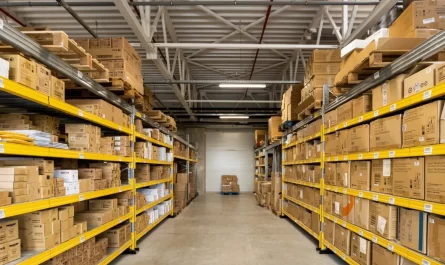As we face the difficulties of climate change and the deterioration of our environment, the importance of incorporating sustainable practices into all aspects of our lives becomes increasingly urgent. One area that is making significant advancements in this regard is the construction industry, specifically in the field of home building. The transition towards sustainable practices in home construction provides a glimpse of hope for a better world, where houses are not just mere shelters but also environmentally conscious and energy-efficient abode. This blog post aims to delve into the concept of sustainable homes, their advantages, and the innovative approaches that are shaping the future of home building.
The Need for Sustainable Homes
The imperative for sustainable homes arises from a pressing need to address environmental challenges and embrace responsible practices in the realm of housing construction. As the effects of climate change become increasingly palpable, it becomes crucial to seek solutions that minimise our carbon footprint and promote a harmonious coexistence with the natural world. Traditional home construction methods often rely on non-renewable resources, contribute to pollution, and consume excessive energy.
Addressing Environmental Challenges
With the growing visibility of climate change’s impact, it becomes imperative to discover remedies that reduce our carbon footprint. Conventional approaches to building homes frequently depend on resources that are not renewable, contribute to pollution, and consume excessive amounts of energy. In contrast, sustainable homes provide a means to address these issues by decreasing energy consumption, preserving water, and employing environmentally friendly materials.
Promoting Energy Efficiency
Energy efficiency is a key aspect of sustainable home building. These homes significantly reduce energy consumption by incorporating innovative technologies such as solar panels, smart thermostats, and energy-efficient appliances. This helps homeowners save on utility bills and reduces the demand for fossil fuels, leading to a greener and more sustainable future.
Key Features of Sustainable Homes
Passive Design
Passive design plays a crucial role in sustainable home building. It focuses on utilising natural elements to regulate temperature, lighting, and ventilation, minimising the need for artificial heating, cooling, and lighting systems. Features like well-insulated walls, double-glazed windows, and strategic shading help maintain comfortable indoor environments while reducing energy dependency.
Renewable Energy Integration
One of the cornerstones of sustainable homes is the integration of renewable energy sources. Solar panels, wind turbines, and geothermal systems allow homeowners to generate their own clean energy, reducing reliance on traditional power grids. This not only provides greater energy independence but also contributes to a significant reduction in greenhouse gas emissions.
Water Conservation
Sustainable homes prioritise water conservation through various means. Low-flow fixtures, rainwater harvesting systems, and greywater recycling technologies help minimise water waste. Additionally, landscaping designs that utilise native plants and drought-resistant species reduce the need for excessive irrigation, preserving this precious resource.
Eco-Friendly Materials
The choice of construction materials greatly influences the sustainability of a home. Sustainable homes prioritise the use of eco-friendly materials such as recycled wood, bamboo, and reclaimed materials. These alternatives reduce the demand for virgin resources, minimise waste, and decrease the environmental impact of the construction process.
Benefits of Sustainable Homes
Environmental Impact
The adoption of sustainable homes has a significant positive impact on the environment. By reducing energy consumption, utilising renewable resources, and minimising waste, these homes help combat climate change, preserve natural resources, and protect ecosystems. They contribute to a cleaner, healthier planet for current and future generations.
Cost Savings
While sustainable homes may require an initial investment, the long-term cost savings are substantial. Energy-efficient designs and renewable energy integration result in reduced utility bills, offering homeowners significant savings over time. Furthermore, the durability of eco-friendly materials often leads to lower maintenance and replacement costs, making sustainable homes a financially sound choice.
Improved Indoor Comfort
Sustainable homes prioritise indoor air quality and comfort. Proper insulation, advanced ventilation systems, and the absence of harmful chemicals commonly found in traditional construction materials create healthier indoor environments. Residents of sustainable homes experience improved air quality, enhanced thermal comfort, and a reduced risk of allergies and respiratory issues.
Sustainable Homes for Secure Future
The evolution of home building towards sustainable practices has paved the way for a greener and more sustainable future. From reducing energy consumption and utilising renewable resources to promoting water conservation and eco-friendly materials, sustainable homes offer a host of benefits. Moreover, businesses have the option to engage environmental consulting services, which can assist them in achieving sustainability and ecological friendliness, all while ensuring compliance with various environmental laws and regulations.


